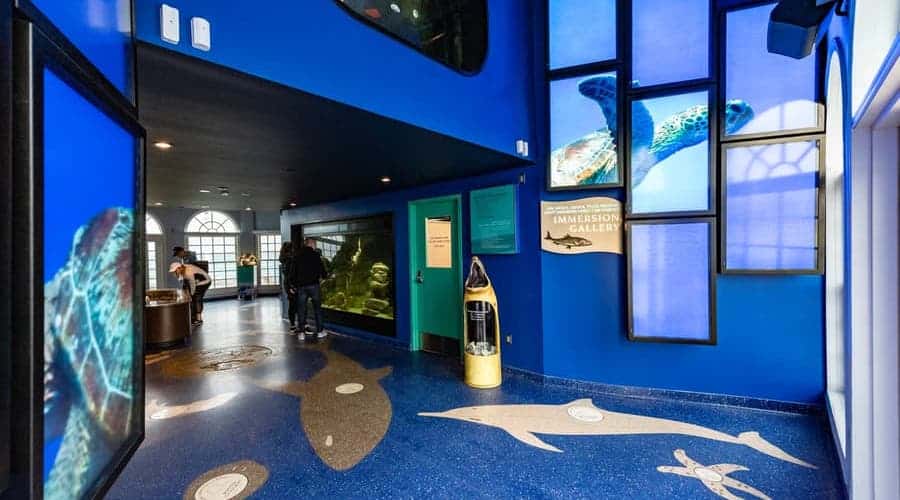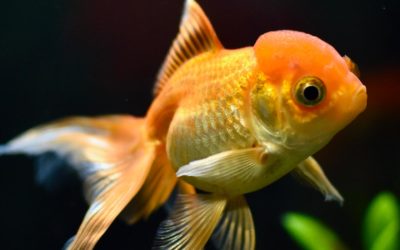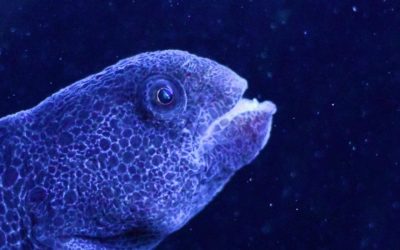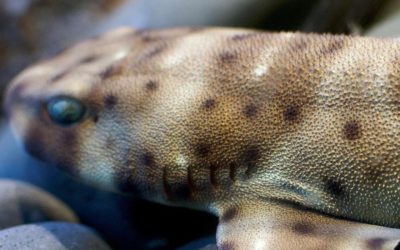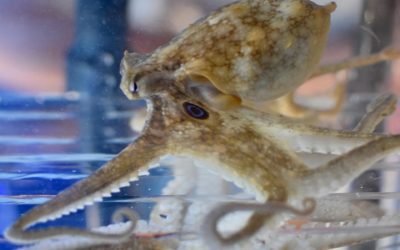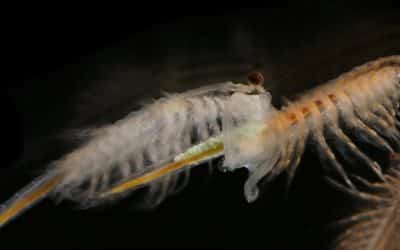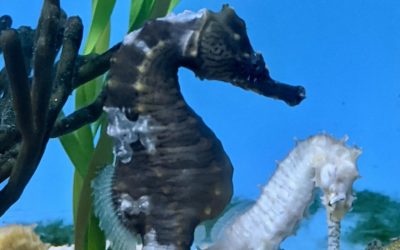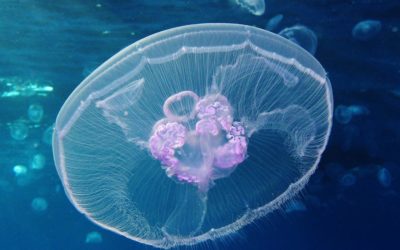Marine Science Gallery
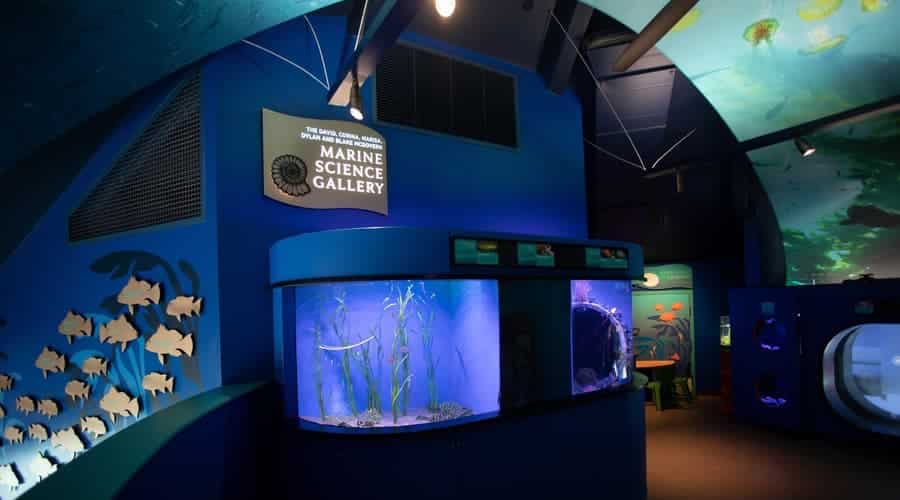
Deep Kelp Forest Tanks
Tide Pool Tank
Animals in the Marine Science Gallery
Other animals…Sarcastic Fringehead Neoclinus blanchardi, Humboldt Squid Dosidicus gigas
Goldfish
Carassius auratus and Betta Fish Betta splendens: Goldfish and betta fish are the only freshwater fish in the aquarium. They can usually be found in streams, riverbeds, and ponds, but ours came from a pet shop! These fish comb the sediment for food and hide in between...
Wolf Eel
Anarrhichthys ocellatus: See the fins on the side of the wolf eel’s body? Those are pectoral fins and that is why the wolf eel is not a true eel like the moray eel! Wolf eels can grow up to 8 feet long. As they age, they develop very strong jaws that are meant to...
Swell Sharks
Cephaloscyllium ventriosum: Swell sharks get their name from the ability to swell up with water when they feel threatened. That way they can fit tightly in a crevice and an enemy cannot attack them. The female swell sharks lay the eggs while swimming through the kelp...
Two-spot Octopus
Octopus bimaculoides: With eight arms, three hearts, nine brains, and the ability to camouflage, the two-spot octopus is the most intelligent animal in the aquarium! Our octopus is a master at hiding so it might be hard to spot her camouflaging and hiding in the tank....
Brine Shrimp
Artemia franciscana: Brine shrimp are a species of plankton that we grow here at the aquarium. They are an important food source and are fed to all the planktivorous (plankton eating) animals including moon jellies and anemones.
Sea Horse
Hyppocampus comes: The species of sea horse that we currently have in the aquarium is called a tiger tail seahorse. It is not local to southern California but commonly found off Indonesia and the Philippines. Sea horses are unique because the males are the ones that...
Moon Jelly
Aurelia aurita: Have you ever been stung by a jellyfish? It probably hurt because they have stinging cells called nematocysts! Moon jellies are the exception because while they still have those stinging cells, they are generally too weak to hurt humans.
Roundhouse Aquarium Exhibits
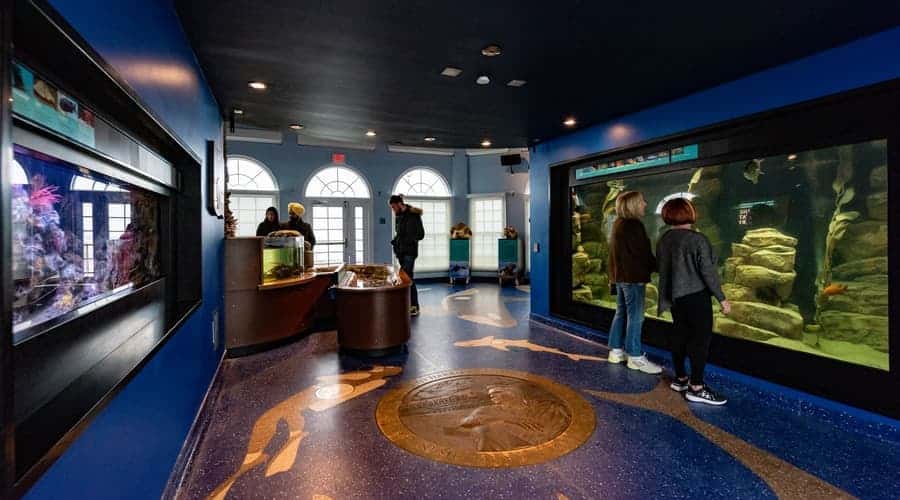
Marine Habitat Gallery
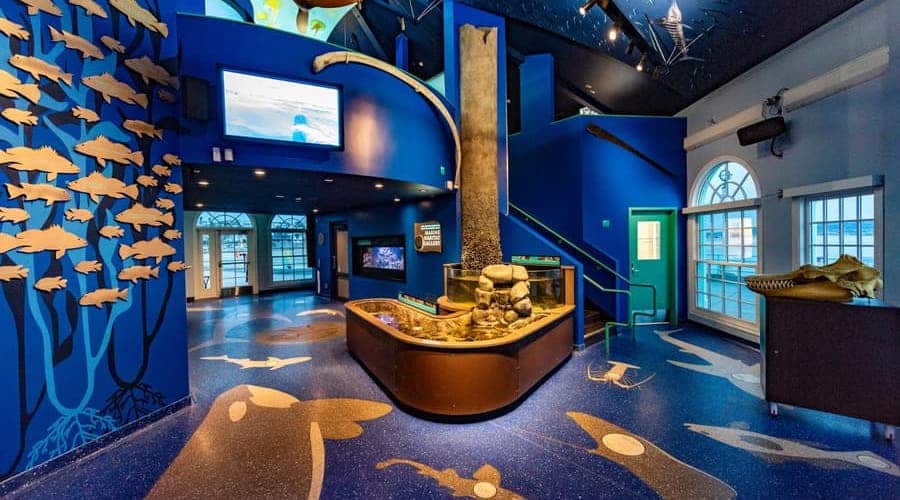
Education Gallery

Marine Science Gallery
